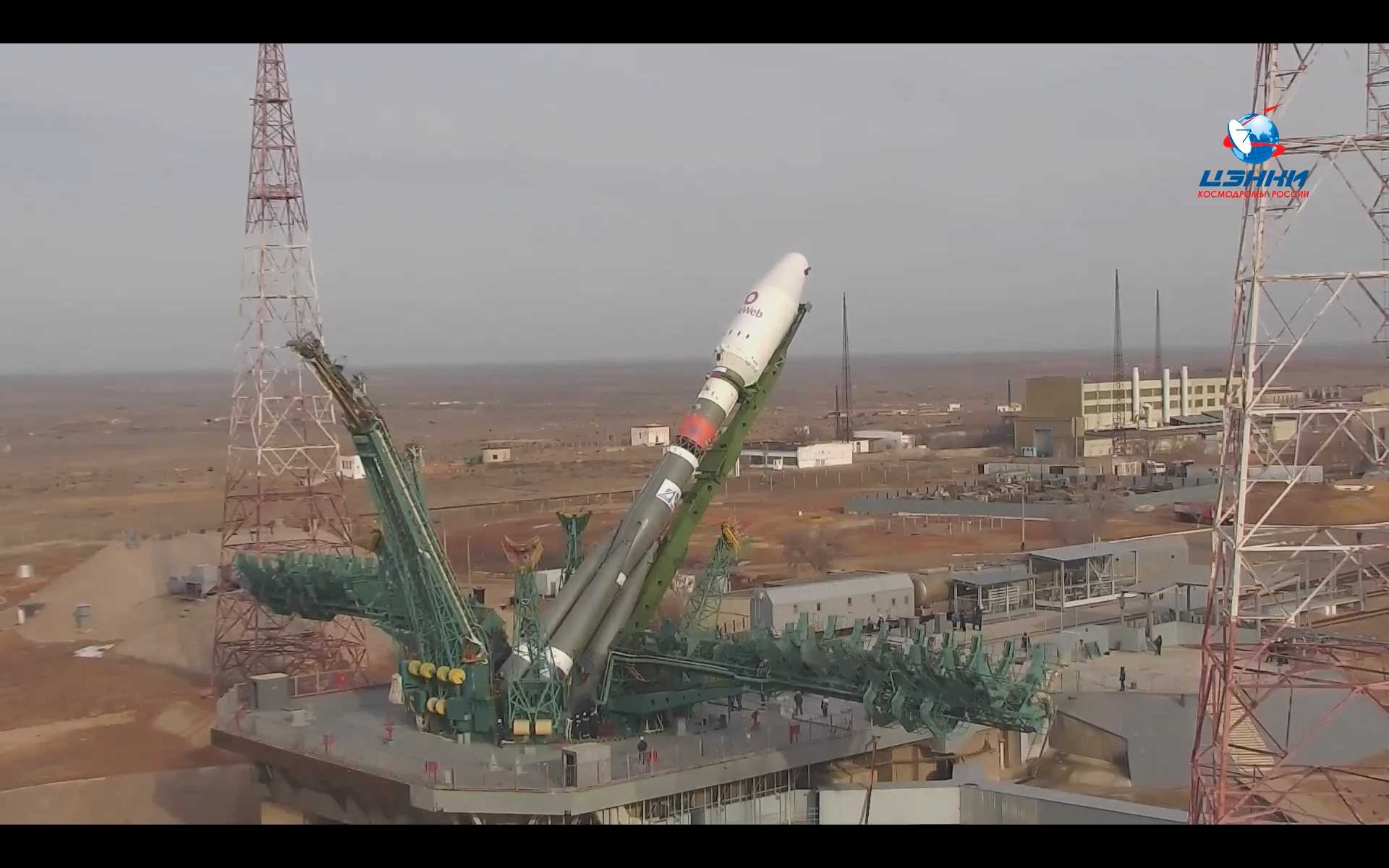
OneWeb has found a new ride for its internet satellites.
OneWeb has launched 428 broadband spacecraft to date, all of them using Russian-built Soyuz rockets operated by the French company Arianespace. But Russia's ongoing invasion of Ukraine made that situation untenable.
Before allowing a Soyuz topped with 36 OneWeb satellites to launch from the Russia-run Baikonur Cosmodrome in Kazakhstan earlier this month, for example, Russia's federal space agency Roscosmos demanded that OneWeb guarantee the spacecraft wouldn't be used for military purposes and that the United Kingdom divest itself from the London-based company. (The U.K government helped buy OneWeb out of bankruptcy in late 2020.) Those demands were not met, and the satellite-laden Soyuz was rolled off the launch pad at Baikonur shortly before its planned liftoff.
Related: Russia's invasion of Ukraine in satellite photos
Live updates: Ukraine invasion's impacts on space exploration
But OneWeb didn't stay in rocket limbo for long: The company announced today (March 21) that it has signed a deal with SpaceX — a competitor in the satellite internet business — to get its spacecraft to low Earth orbit (LEO).
"We thank SpaceX for their support, which reflects our shared vision for the boundless potential of space," OneWeb CEO Neil Masterson said in a statement today. "With these launch plans in place, we're on track to finish building out our full fleet of satellites and deliver robust, fast, secure connectivity around the globe."
OneWeb is assembling a constellation of 648 broadband satellites. The company did not announce the terms of the SpaceX contract, but Masterson's statement suggests that SpaceX might deliver the remaining 220 satellites to LEO, likely using its workhorse Falcon 9 rocket. In today's statement, OneWeb representatives said the first launch with SpaceX is expected later this year.
Get the Space.com Newsletter
Breaking space news, the latest updates on rocket launches, skywatching events and more!
SpaceX is building its own broadband constellation in LEO, a giant network called Starlink that already includes more than 2,000 satellites. And Starlink will get much larger still, if all goes according to plan; SpaceX has permission to launch 12,000 Starlink satellites and has applied for approval for up to 30,000 more.
Mike Wall is the author of "Out There" (Grand Central Publishing, 2018; illustrated by Karl Tate), a book about the search for alien life. Follow him on Twitter @michaeldwall. Follow us on Twitter @Spacedotcom or on Facebook.
Join our Space Forums to keep talking space on the latest missions, night sky and more! And if you have a news tip, correction or comment, let us know at: community@space.com.

Michael Wall is a Senior Space Writer with Space.com and joined the team in 2010. He primarily covers exoplanets, spaceflight and military space, but has been known to dabble in the space art beat. His book about the search for alien life, "Out There," was published on Nov. 13, 2018. Before becoming a science writer, Michael worked as a herpetologist and wildlife biologist. He has a Ph.D. in evolutionary biology from the University of Sydney, Australia, a bachelor's degree from the University of Arizona, and a graduate certificate in science writing from the University of California, Santa Cruz. To find out what his latest project is, you can follow Michael on Twitter.









